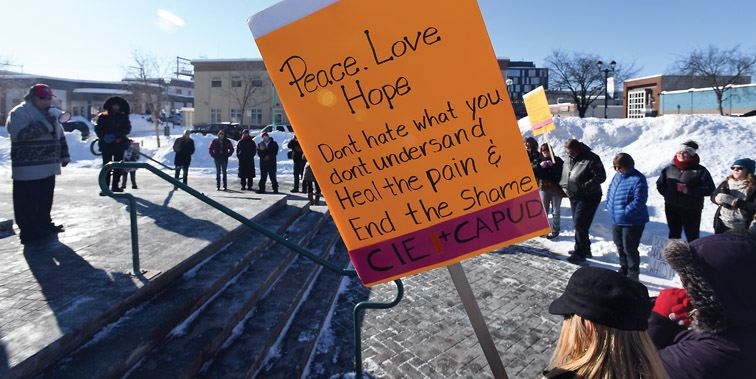Northern B.C.'s only overdose prevention site has reversed 34 potentially lethal overdoses since opening, according to data released by Northern Health.
The site, located on the corner of 3rd and George, has seen 4,855 visits between December 2016 and January of 2018. Like other similar sites established throughout the province, there have been no deaths due to overdoses on-site. Northern Health initially opened the site as an emergency measure in the midst of the ongoing opioid crisis in December of 2016. The site provides a supervised environment for drug users, where they can be safely monitored and immediately treated by health professionals if an overdose occurs. Supplies of Naloxone, a medication used to reverse overdoses, are available, in the clinic.
According to Andrew Gray, the medical health officer for Northern Health, overdose prevention sites largely operate in a manner identical to safe injection sites, such as Insite in Vancouver.
"The most important feature of these services - which is that people can use drugs under the watchful eye of a trained professional or somebody who has been trained to recognize the signs of overdose - that is happening in Prince George," Gray said.
"The focus is not on the drug use per se, it's on whether the person overdoses or not, and monitoring them for signs and symptoms."
According to a recent review of drug overdose deaths by the B.C. Coroners Service, the Northern Health region has seen the fewest number of overdose deaths of any health authority in the province, both in absolute numbers and per capita. However, the region has still seen a high number of these deaths; Prince George saw 19 overdose deaths in 2016, 22 in 2017 and has so far seen 8 over the first two months of January.
Health authorities throughout B.C. have linked the high number of overdose fatalities province-wide to the contamination of the drug supply with fentanyl, an opioid that is prescribed for chronic pain. While the number of overdose deaths in B.C. reached 1,446 by the end 2017, the numbers for January and February have begun to trend downward.
According to Gray, the overdose prevention site in Prince George is still considered to be an emergency service established by the province, as opposed to a permanent safe injection site.
"The distinction is primarily legal at this point, where a supervised consumption service is defined in federal law under the Controlled Drugs and Substances Act or its regulations. It requires a formal exemption process from Health Canada to be able to formally declare a supervised consumption site," he said.
Gray said plans to establish the site as a permanent safe injection site have been outlined in a review of Prince George's downtown health services. A formal plan has not yet been completed, although the current site is under renovation.
Other health authorities have also seen a high number of reversed overdoses within similar sites. The Interior Health region, for example, which has established four different overdose prevention sites, saw 96 overdoses reversed by on-site staff since December of 2016. Each of these sites saw, on average, over 5,108 visits since opening.
A review panel struck by the B.C. Coroner Service found that most overdose deaths occur indoors at either private residences or other residences such as shelters or group homes. Most occurred amongst individuals using drugs alone.
The review panel also found that no individuals who perished were found with traces of Suboxone, a combination pill composed of both buprenorphine and Naloxone, in their system. The authors suggested this demonstrated the safety of this medication, which has become increasingly prescribed by physicians as a treatment for chronic opioid addiction.
When asked why the northern region has seen comparatively fewer overdose deaths than other parts of B.C., Gray said this remains unclear. He suggested it could be because chronic users often move to more urban areas, where access to housing and healthcare services are concentrated.
"The drug supply is not different, our health services are not, you know, way better than they are in the Lower Mainland. I think it's primarily just the urban factor and the migration of people," he said.


